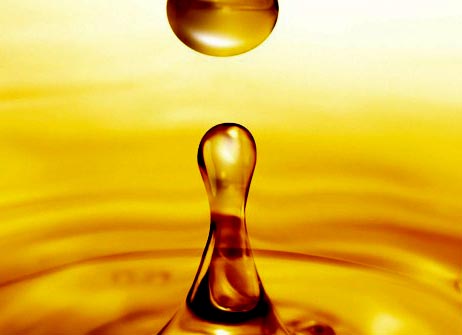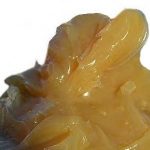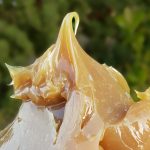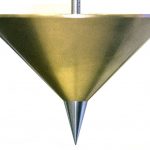Lithium grease is widely regarded as one of the most versatile greases ever made. It was first created back in 1938 and has remained incredibly popular ever since. In fact, more lithium grease is produced than all other types of grease combined.
What is lubricating grease?
Lubricating grease is a thickened oil (gelled). [1]. For the most part, it has at least two components, a thickener and a base fluid or liquid lubricant. Thickener transforms liquid lubricant (base oil) into a semi-solid grease. Along with thickener and base fluid, most modern greases contain performance additives. Additives are required to improve performance or to meet current standards and specifications.
Grease Components:
In short, three main components of greases are:
- Base oil
- Thickener system, and
- Performance additives.
So, Base oil is a liquid lubricant, thickener used to convert liquid oil to semi-fluid (gel), and additives to enhance performance and protection. For example, common grease additives are anti-corrosion, metal deactivators, antioxidants, and performance enhancement additives like anti-wear properties and other characteristics.
Grease Composition:
- Base oil 75-98%
- About 2-20% of thickener system (thickener transforms a liquid base oil into a grease) [2]
- 0-10% of additives
Lithium Grease
Lithium grease was invented in the early 1940s. It was made by reacting lithium hydroxide with fatty acids. At this time, modern lithium soap (thickener) consists of 12HSA (12-hydroxystearic acid, or triglycerides) with lithium hydroxide monohydrate in a base fluid.
Grease is one of the oldest lubricants used by humans dating back to 1400BC.[3]. It reduces friction as well as resists water and provides sealing. More than 90% of all bearings have grease as a lubricant. [2]
Base oils can be mineral oils or synthetic fluids, or a blend of any or both. Many fats and fatty acids are suitable to make lithium soaps. But the use of 12HSA along with HCO (hydrogenated castor oil) is most preferred. lithium 12-hydroxystearate grease is probably the best multipurpose grease ever developed.
According to a recent NLGI survey, the production of lithium greases is higher than all other greases combined. Lithium grease has excellent water resistance (not as good as calcium), superior mechanical or shear stability, excellent thermal stability and, excellent storage stability. Along with 130°C (266°F) continuous operating temperature and 190-200°C dropping point. It is the most preferred bearing grease in almost all industrial sectors.
Lithium greases are expensive due to the high price of raw materials. Such as the price of lithium hydroxide monohydrate and the requirement of rust protection additives.
- Lithium Grease: Composition, Formulations, and ApplicationsLithium grease is widely regarded as one of the most versatile greases… Read more: Lithium Grease: Composition, Formulations, and Applications
- Calcium Grease: Composition, Formulations, and ApplicationsCalcium Soap Greases: Tallow (animal fat) based calcium greases were the earliest… Read more: Calcium Grease: Composition, Formulations, and Applications
- NLGI Grease Consistency, Classifications and ApplicationsLubricating grease consistency A grease consistency or penetration score indicates grease consistency… Read more: NLGI Grease Consistency, Classifications and Applications

Mineral paraffinic base oils along with naphthenic are prevalent to manufacture greases. Greases consist 75-98% of base oil.
Base Oil
Most greases have 75-98% paraffinic mineral base oils. In particular, solvent refined (solvent neutral SN) and hydro-processed paraffinic base oil are preferred. For example, solvent neutrals SN600, SN500, and N600, and N500 (neutrals), etc. Similarly, the preferred base oil for high viscosity application is bright stock blend. Apart from this, naphthenic base stocks are dominant in grease applications because of their high solvency and better thickening power.
Due to the higher price of synthetic fluids like PAO, they have limited use only.
Vegetable oil greases are also available. The use of silicon oil and especially in dielectric grease is increasing. Usually, silicone grease is composed of silicon oil and fumed silica along with stabilizers and performance additives. But due to the high price of silicon oil, it has limited use.
Esters and PAO-based greases are only for demanding applications due to the very high cost of the synthetic base fluids.
In short, greases have mineral paraffinic base oils as a liquid lubricant. For high viscosity applications, it is a blend with bright stock. Similarly, manufacturers use naphthenic base oils to achieve better thickening by soaps and low-temperature fluidity. The soap contents are lowest with a naphthenic base oil that makes grease economical.
Uses (applications) of lithium grease
- Multipurpose grease for automotive, industrial, and marine
- Multipurpose lubricant with operating temperature not exceeding 130°C (266°F)
- Chassis lubrication in vehicles
- Bearing grease for low, medium, and high speed*
- Open and enclosed gears lubrication
- Suitable for automotive and industrial machines, plain/rolling elements bearings, marine, agricultural, mining, construction machinery, pumps, conveyors, elevators, chains, pulleys, cranes, shafts, wire ropes, and automotive applications, where good water resistance and good thermal stability are required.
Advantages of lithium grease
- Smooth buttery structure
- High dropping point 190-200°C (374-392°F)
- Good low-temperature properties (base oil-dependent)
- Bearing grease for almost all types of bearings
- Available in EP (extreme pressure)
- Good water resistance
- Excellent shear stability
- Excellent thermal stability
- Good storage stability
- Long service life
- Superior load and anti-wear properties with EP additives
- Pumpable
Disadvantages of lithium grease
- Lithium grease is expensive due to its high raw material and production cost.
- The dropping point of 190-200°C (374-392°F) is lower for many high-temperature applications.
- Not recommended for use in sliding and reciprocating applications due to less adhesion. [4]
- Lower water resistance than calcium greases
- Specifically need anti-corrosion additives.
Grease Manufacturing: Lubricating grease is no longer an art but a science.[4] Production plant, manufacturing, and use require knowledge in many fields. Including but not limited to physics, chemistry, tribology, rheology, formulation, manufacturing, mechanical engineering, chemical engineering, and health and environmental sciences.[3].
For example, production and manufacturing-unit fall under mechanical and electrical engineering. The manufacturing process and formulating of grease is pure chemistry. Its mechanical effect as a lubricant between the two moving objects is in the field of physics. In the same way, its viscosity or consistency and flow properties fall under rheology (the science of flow). The environmental impact of grease manufacturing plants and the use of grease is the domain of health and environmental sciences.
Composition/Formulation examples of simple lithium grease:
| Components | Percent Wt |
|---|---|
| Base Oil (Group I SN500) | 46.35% |
| Bright Stock | 38% |
| 12-Hydroxystearic Acid | 5.1% |
| Hydrogenated Castor Oil | 5.1% |
| Lithium Hydroxide | 1.45% |
| Generic grease additive package | 4% |
| Components | Percent Wt |
|---|---|
| Base Fluid SpectraSyn™ 100 (Synthetic G IV) | 26.84% |
| SpectraSyn™ 6 | 54.54% |
| 12-Hydroxystearic Acid | 10% |
| Hydrogenated Castor Oil | 2.8% |
| Lithium Hydroxide | 1.82% |
| Generic grease additive package | 4% |
Formulations for simple soap lithium greases are listed. Table 1 is a lithium grease in mineral group I base oil. Whereas table 2 is a synthetic PAO formulation. Both formulations are for illustrative purposes only. In the real world, considerable formulation science is required to achieve commercially viable results.
How to make lithium grease
The process to make simple lithium soap grease. See the above examples for composition or formulation.
- Add the initial base oil (40-60% of total base oil) to an open kettle, start heating and mixing.
- Heat to 80-84°C (176-183°F)
- Add all the 12-HSA and HCO in any order and allow it to melt.
- At 88-90°C (190-194°F), add lithium hydroxide monohydrate slurry while mixing over 20-30 minutes.
- Let the batch react for 15 minutes.
- Following the 15 minutes mixing time, apply full heat to initiate the temperature ramp to the 195-200°C (383-392°F).
- Shut off the heat and hold the batch at 200-210°C (383-410°F) for 15 minutes while mixing.
- Begin cooling, apply cooling oil (remaining base oil) at a slow, controlled rate.
- Add more base oil as needed to facilitate mixing.
- Cool to below 80°C (176°F), add additives, add more base oil to achieve desired NLGI grade and mill.
| Description | Simple Soap Lithium Multipurpose | Anhydrous Calcium Multipurpose |
|---|---|---|
| Texture | Buttery | Buttery |
| Dropping Point Max °C | 200°C (392°F | 150°C (300°F) |
| Useable Temp °C | 130°C (266°F) | 110°C (230°F) Max |
| Good for Use as | Multi-Purpose | Multi-Purpose |
| Water Resistance | Good-Excellent | Excellent |
| Work Stability | Good | Fair-Good |
| Oxidation Stability | Poor-Excellent | Fair-Excellent |
| Rust Protection | Poor-Excellent | Poor-Excellent |
| Oil Separation | Good | Good |
| Pumpability | Good | Good |
| Storage Stability | Good-Excellent | Fair-good |
References:
[1] ASTM grease definition
[2] NLGI grease guide




Can you please any body share the transparent lithium grease formulation and process?. Thanks!
I use only LiOH and HCO with other additives. Base oil is 600N and BS150. But I always have low dropping point below 180. And if I heat up to 200’C, the soap will get burnt. please kindly advice what could be the problem.
In practice lithium greases made with HCO should give dropping points ≈190–200 °C (or at least ≥190 °C). A low dropping point plus “burning” at ~200 °C most commonly points to insufficient/poor-quality LiOH (under-neutralisation), or process problems (local overheating / poor mixing / kettle design).
please guide me, how can make MP grease?
bisakah kita mengganti hco dengan minyak kelapa sawit?
can we replace HCO with palm oil?
is it possible to make grease with lithium hydroxide
Yes it is.
lithium or lime mix soap grease how can make this grease
Very informative, would like to see articles for the other thickeners like Lithium complex, Aluminum/complex, Calcium Sulfonate, Polyureas, PTFEs, etc.
Here base oil 🛢 is available in 205 litres. And VI IS ALSO AVAILABLE IN 205 LITRES BARRELS.
TO MAKE 40 GRADE OIL, HOW MUCH QUANTITY VI SHOULD BE MIXED IN BASE OIL….
TO MAKE 90 GRADE OIL HOW MUCH QUANTITY VI SHOULD BE MIXED IN BASE OIL.
PLEASE INFORM
Hello!
Have some questions about formulation and blending process.
-How is shaft speed affect yield.
-What is the difference between 2-HSA and HCO? And why use both in grease blending as raw
materials?
-Any required ratio of LiOH:12 HSA:HCO to get maximum yield.
-How is intermediate and final temperature & ramp time during grease blending affect yield and grease properties?
-How hold time for final temp before addition base oil for cooling affect yield and grease properties?
-How does start quantity base oil affect yield and grease properties?
-How does cooling rate affect grease properties?
If you provide more services, kindly contact me via the mentioned e-mail.
Thanks.
very nice please share lithium complex formulation,
also how can I attain transparent and crystal appearance in grease please tell.
If your soap formation is correct, you will require homogenisation & deaerator for best appearance..
Thank you for the info here its very useful. Kindly share info on Lithium complex formulation
Interested in your formulations
Thanks, Please use contact us form.
Hi Admin,
Can we prepare lithium grease with lime powder by reducing lithium percentage to maintain cost.
Please suggest.
We will fill contact form too.
Rgds,
Yes, we can use lime along with lithium to reduce cost but it will reduce the dropping point. we will publish formulation later.
I want to reduce soap content of lithium grease from hco and lithium only please tell me soap content for nlgi 3 , using base oil 400n hvi viscosity at 40 = 89.99 cst
please share formulation for said greases. thank you